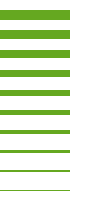https://doi.io-warnemuende.de/10.12754/msr-2007-0068
doi:10.12754/msr-2007-0068
© Author(s) 2007. This work is distributed
under

Dieses Werk ist lizenziert unter einer Creative Commons Namensnennung - Nicht kommerziell - Keine Bearbeitungen 4.0 International Lizenz.
Redox Layer Model (ROLM): a tool for analysis of the water column oxic/anoxic interface processes
Abstract. The goal of this coupled 1D hydrophysical-biogeochemical model was to study the cycling of main elements in the pelagic redox layer in Seas with anoxic conditions. The processes of formation and decay of organic matter (OM), reduction and oxidation of species of nitrogen, sulphur, manganese and iron, and transformation of phosphorus species were parameterized. The temporal and spatial development of the model variables were described by a system of horizontally integrated vertical diffusion equations for non-conservative substances. The calculated spatial and temporal distributions of parameters are in good agreement with observed vertical distribution patterns. To study the influence of the seasonal variability on the chemical structure of the pelagic redoxlayer in different system we used different hydrophysical scenarios of the Black Sea and the Baltic Sea. Results clearly showed that organic matter, formed during the bloom periods by phytoplankton, exerts a major direct influence on structure and processes in the remote redoxinterface in both Seas. This is due to the competition for the dissolved oxygen between the oxidation of organic matter (particulate and dissolved) originating in the mixed layer and the oxidation of reductants supplied from the anoxic deep water. As a result of this competition, the processes of OM mineralization become more intense in summer, leading to increased activity of heterotrophic bacteria (both in oxic and anoxic zones), as well as of aerobic autotrophic bacteria (nitrifiers). The activity of the anaerobic chemolithotrophic organisms are reduced in summer, because less metal oxidants (which require oxygen for their formation) are available for reactions of anaerobic oxidation of sulfides and other reduced sulfur-species.
